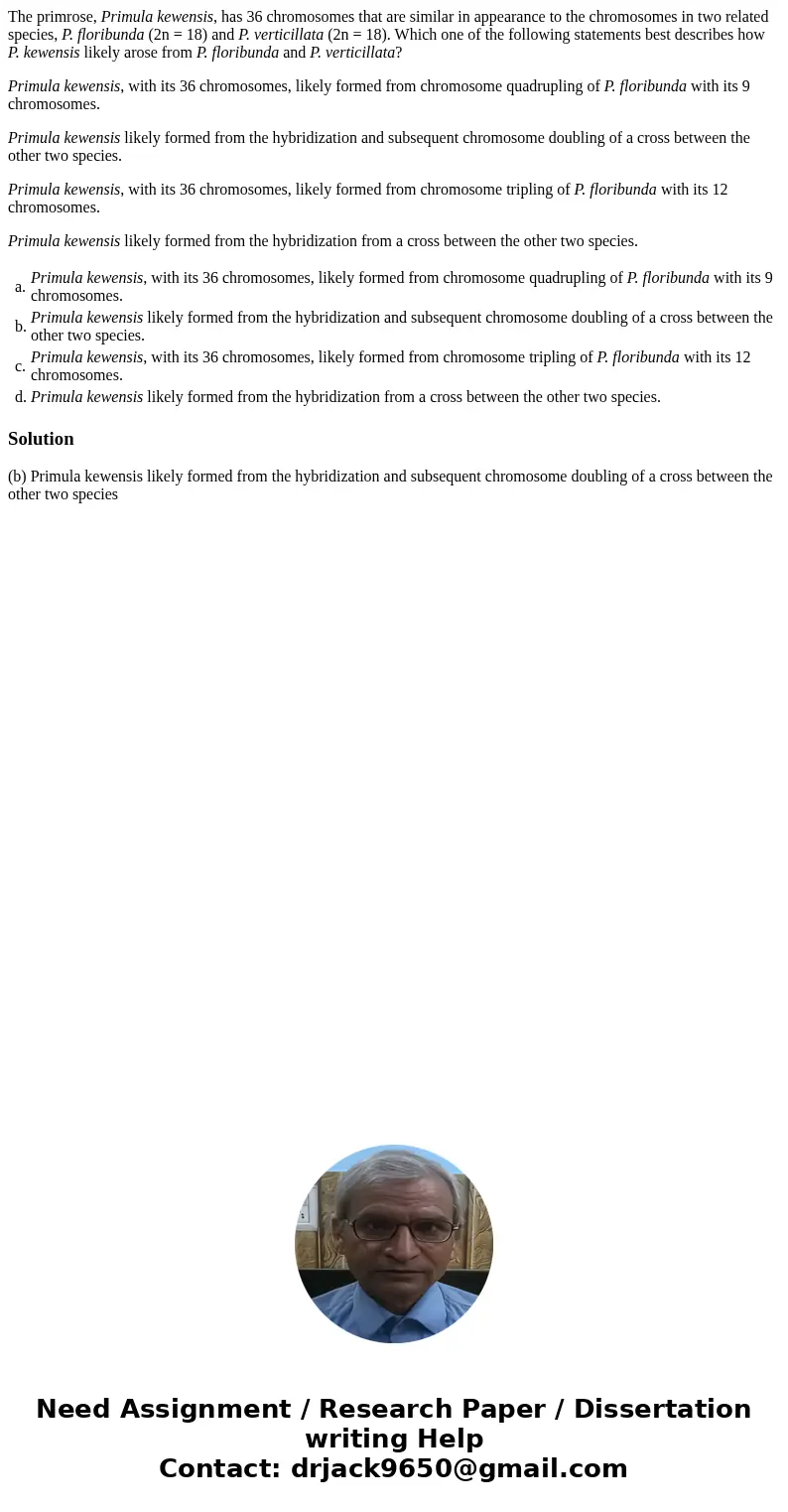The primrose Primula kewensis has 36 chromosomes that are si
The primrose, Primula kewensis, has 36 chromosomes that are similar in appearance to the chromosomes in two related species, P. floribunda (2n = 18) and P. verticillata (2n = 18). Which one of the following statements best describes how P. kewensis likely arose from P. floribunda and P. verticillata?
Primula kewensis, with its 36 chromosomes, likely formed from chromosome quadrupling of P. floribunda with its 9 chromosomes.
Primula kewensis likely formed from the hybridization and subsequent chromosome doubling of a cross between the other two species.
Primula kewensis, with its 36 chromosomes, likely formed from chromosome tripling of P. floribunda with its 12 chromosomes.
Primula kewensis likely formed from the hybridization from a cross between the other two species.
| a. | Primula kewensis, with its 36 chromosomes, likely formed from chromosome quadrupling of P. floribunda with its 9 chromosomes. | |
| b. | Primula kewensis likely formed from the hybridization and subsequent chromosome doubling of a cross between the other two species. | |
| c. | Primula kewensis, with its 36 chromosomes, likely formed from chromosome tripling of P. floribunda with its 12 chromosomes. | |
| d. | Primula kewensis likely formed from the hybridization from a cross between the other two species. |
Solution
(b) Primula kewensis likely formed from the hybridization and subsequent chromosome doubling of a cross between the other two species

 Homework Sourse
Homework Sourse